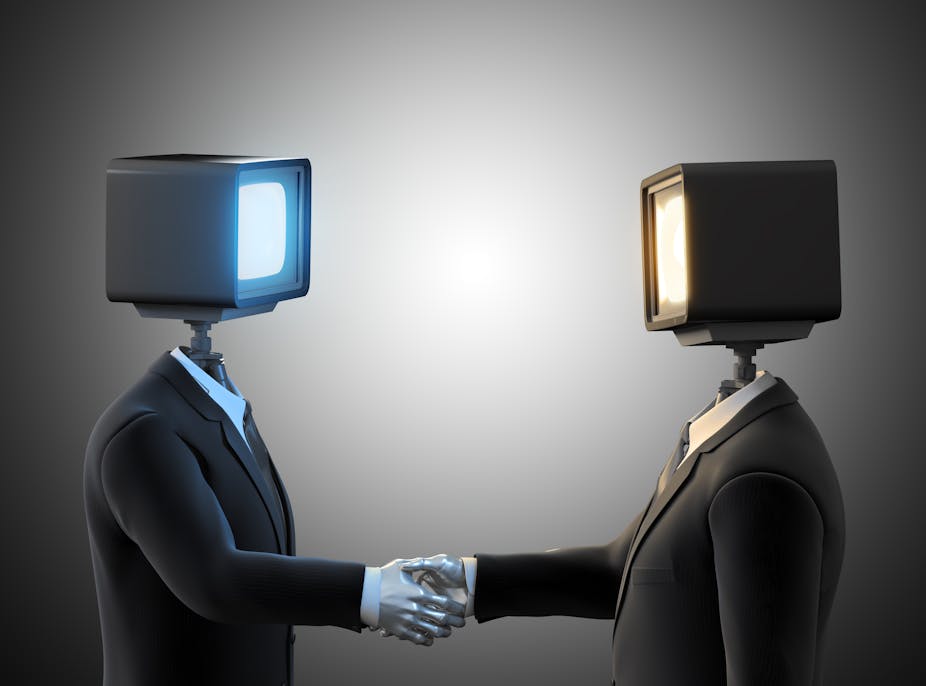While women sitting on company boards remains a much-discussed topic, there is something new waiting to take a seat at the table: artificial intelligence, computers with company voting rights.
Deep Knowledge Ventures has appointed an algorithm called VITAL (Validating Investment Tool for Advancing Life Sciences) as a member of its board. It uses state-of-the-art analytics to assist in the process of making investment decisions in a given technology.
Of course, companies have used computer assisted analysis to analyse investment opportunities for a long time, but is the vision of a computer with equal voting rights as human board members a bit far-fetched?
Defining artificial intelligence

What does the future hold with regard to the influence of computers on business decisions – and can they ever be used in place of a human board member? The Turing Test, formulated by Alan Turing in the 1950s, provides a strict interpretation of machine intelligence. A human participant must be unable to tell whether they are communicating (through a typed, text medium) with a computer or a human. If the human participant cannot reliably tell whether their conversation partner is a computer, then Turing would argue the computer has demonstrated intelligence.
Not everybody agrees that passing the Turing Test is enough for a computer to exhibit intelligence. In his Chinese Room argument, the Stanford philosopher John Searle described a closed room, into which a sentence written in Chinese is fed. A response emerges from the room, written in Chinese, that correctly answers the questions or conversational cues in the sentence submitted. The assumption could be made that inside the room is someone that can speak Chinese.
Instead, inside the room is a human who cannot speak Chinese but is equipped with manuals that exhaustively provide the appropriate Chinese characters to produce in response to those received. The argument holds that an appropriately programmed computer (the person in the room) could pass the Turing Test (by producing convincing Chinese) but would still not have an intelligent mind that we would regard as human intelligence (by understanding Chinese).
A computer in the boardroom
If we want computers to make business decisions and even have equal voting rights on a company board, what would it have to do in order for the other board members to have confidence in its decisions?
Part of the challenge of the Turing Test is syntax versus semantics. Compare the sentences “Fruit flies like bananas” and “Time flies like an arrow”. The sentence structure is similar but the meaning is entirely different, making it a linguistic challenge.
Even a very simple conversation relies upon a substantial amount of linguistic knowledge and understanding. Consider the following questions:
What was the result of the big match last night?
I have K at my K1, and no other pieces. You have only K at K6 and R at R1. It is your move. What do you play? (these chess moves are from Turing’s original paper)
What book do you think of if I say 42?
These might seem easy for humans to understand, but are challenging for a computer. Thankfully, a computer making business decisions is not faced with such a general task as the Turing Test. But if we are serious about having a computer as a full member of a company board, what are the hurdles that need to be addressed? Here is a (almost certainly not complete) list.
Access to LOTS of data: An automated approach to decision-making will require the use of big data. Company reports and accounts, economic data such as share prices, interest rates and exchange rates, and government statistics such as employment rates and house prices would all be obvious inputs. More subjective data such as newspapers, social media feeds and blogs might also be useful. Peer-reviewed scientific papers might also provide insight. Of course as always, the challenge with big data is to process the large quantities of data that will be be of different types (figures, text, charts), stored in different ways, and have missing elements.
Cost: Much of the data required is likely to generate significant costs. Social media feeds may be free (but not always), but stock market information, company accounts, government data, scientific papers and so on are generally commercial products that must be paid for. In addition, there is the cost of developing and maintaining the system. The algorithm is likely to require continual development by highly skilled analysts and programmers.
Complexity: Big data algorithms will be central to the boardroom decision support algorithm, but they will be underpinned by advanced analytics, many of which we are only just starting to understand and develop. To have a real impact there is likely to be some research required which would require staff with the relevant skills.
So, are we really at a point where a computer could take its place on the board? Technically it’s possible but the costs to develop and maintain, as well as subscribe to the data that is required, probably means that it is not within the reach of most companies and I suspect that the money would be better spent on a human decision maker – at least for now.

